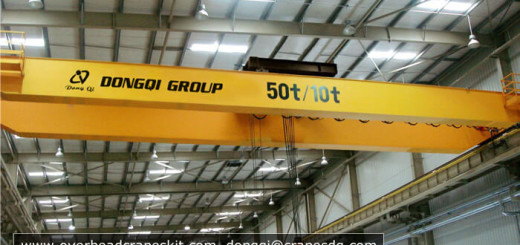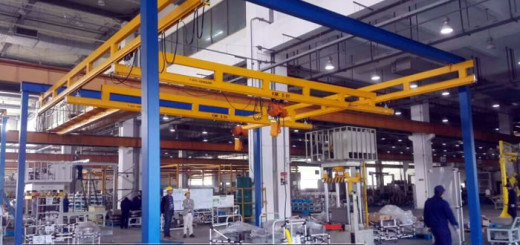Key points for Safe Operation of Electric Hoist
Electric hoist is a kind of lifting equipment commonly used in enterprise production. It is often installed on a single beam crane as a lifting mechanism to complete the lifting of heavy objects. The editor introduces the key points of safe operation of electric hoist.
Conditions that the operator should have
- Should have knowledge of mechanical and electrical operations, and be in good health;
- You should be familiar with the structure, performance, safety regulations and this manual of the electric hoist;
- Operators must undergo on-the-job training and be certified.
People who have one of the following conditions should not operate
- Overweight or unclear object quality, lifting and pulling buried objects and oblique pulling, oblique hanging, etc.;
- The electric hoist has defects or damages that affect safe work, such as brakes, stoppers failure, damage to the hook nut anti-loosening device, and wire rope damage that meets the scrap standard.
- The sling is not firm or unbalanced and may slide. The edges and corners of the heavy object are not lined with the steel wire rope.
- The work site is dim and it is impossible to see the site and the suspended objects clearly;
Code of Practice
- Before daily use, a no-load test must be carried out to check whether the control buttons and stoppers are sensitive and normal? Can the wire rope be wound on the drum normally? Are there any abnormal noises during operation? Is the brake reliable? If there is any problem, it should be eliminated in time before it can be used.
- Daily inspections should be made before each shift;
- The electric hoist must be used according to the rated load, and overloading is strictly prohibited.
- The electric hoist can only be used for vertical hoisting, not tilted hoisting, or dragging heavy objects along the ground, and it is not allowed to hang the load in the air for a long time.
- After the work is completed, the hook should be raised to a height above 2m from the ground and the main power supply should be cut off.
- Do not adjust the brake or perform inspection and maintenance when lifting heavy objects;
- When a heavy object is close to or reaches the rated load, it should be hoisted with a small height and short stroke first and then lifted at the minimum height. Do not pass over someone during lifting;
- When the lower limit cam switch of the electric hoist needs to be removed due to lifting, when the hook is at the lowest point of the working position, the safety ring of the steel wire rope on the drum must be no less than 2 times;
- Do not disassemble or modify any safety device on the electric hoist;
- If there is abnormal noise during use, the procedure of stopping first, checking later, and driving after troubleshooting should be followed;
- After lifting heavy objects and stopping, if brake failure is found, keep calm. You should quickly press the “up” button to raise the weight a little, then press the “down” button, repeat this many times, so that the weight will slowly drop to the ground, and then overhaul the gourd.
Requirements for the user
- The user must establish necessary rules and regulations and safe operation procedures;
- If the user has special requirements for use, the modification must be approved by the manufacturer;
- The user must create a file for the electric hoist of the unit. The contents of the file should include: the factory technical documents of the electric hoist, the installation location and start-up time, the installation and commissioning inspection records, the daily use, maintenance, and repair records, the equipment and personal accident records, and the problems and evaluations of the equipment.
The maintenance of the electric hoist can effectively extend the service life of the equipment and keep abreast of the operating status of the equipment.




